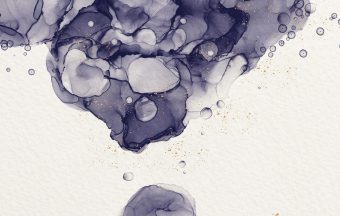Air pollution often resembles dense fog covering cities, and artists frequently use it as inspiration for powerful, mystical photographs. While it may appear abstract and mesmerizing in images, the reality is far more serious—air pollution is responsible for the highest number of premature deaths worldwide.
Asia, the most populous continent on Earth, is home to one of the fastest-growing economies in the world—India. This rapid economic growth has positioned India among the countries with the most polluted air. Data shows that its capital, New Delhi, has the worst air quality among all global capitals. The primary sources of this pollution include vehicle emissions, cooking, power plants, heating, and industrial facilities.
Fine particles, known as PM 2.5, are among the most widespread pollutants, particularly in urban areas. These tiny particles measure only up to 2.5 micromillimeters, allowing them to quickly enter the lungs and bloodstream, leading to serious health problems, such as respiratory and cardiovascular diseases. PM 2.5 particles encompass a wide range of substances, and one of their primary components is soot. Soot forms as a result of burning fossil fuels, biomass, and chemicals containing tiny particles of unburned carbon.
IN FOCUS:
- Scientists from Vinča Designing a Multifunctional Filter for Wastewater Purification and Hydrogen Production
- From Waste To Fashion Show
- Reverse Vending Machines – A Smart Solution for a Clean Future
Although India experiences high soot concentrations, this issue has inspired groundbreaking innovation. The MIT Media Lab, a research center at the Massachusetts Institute of Technology (MIT) in Cambridge, developed KAALINK technology designed to capture soot from the air. This small device is installed in the exhaust pipes of vehicles or generators and can capture up to 95 percent of soot particles. Thanks to this innovation, the startup Graviky Labs has created an entirely new product—an eco-friendly ink called AIR-INK.

AIR-INK repurposes soot emissions generated in industrial and transportation processes instead of relying on fossil fuels, as with traditional inks. This process not only reduces dependence on fossil resources but also improves air quality by capturing particles that would otherwise remain in the atmosphere.
The KAALINK technology can collect enough emissions in just 45 minutes of operation to produce approximately 30 milliliters of ink. So far, the startup has developed two products: a marker with tip sizes ranging from 2 to 50 millimeters and printing ink. The 30-milliliter ink supply is sufficient to fill one marker or one small bottle of printing ink.
Once the soot is collected, it undergoes a purification process to remove harmful substances, such as heavy metals and carcinogenic materials, ensuring the final product is safe for use.
This article began with an artistic note, and it will end the same way. While soot in the air has long inspired artists to create surreal and mystical photographs, its fusion with environmental awareness introduces an entirely new dimension to the world of art. AIR-INK allows soot, once a harmful byproduct of industry and transportation, to become a valuable material for artistic creations. What was once a symbol of pollution is now transformed into a tool for sustainable innovation.
Prepared by Katarina Vuinac
The story was published in the Energy portal Magazine CIRCULAR ECONOMY

